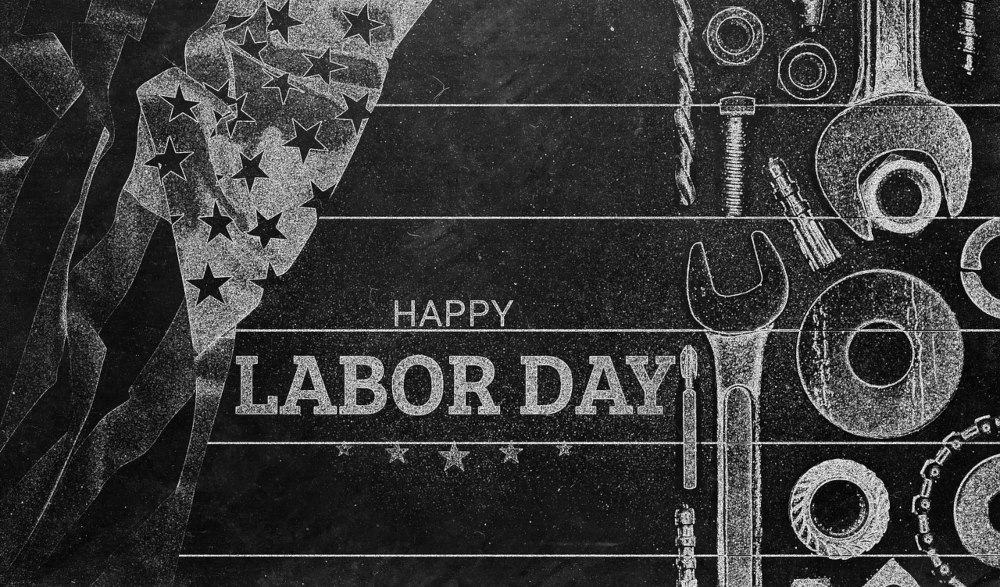
Labor Day was important once, but do we really need it now?
Labor Day is the holiday that, for most Americans, has lost its original meaning. Originally designed to honor the labor movement, now it is more the build-up to the Labor Day holiday weekend, and media give scant thought to the selfless labor activism that helped produce the fabled American middle class. It is human nature to take for granted benefits we have come to take for granted, such as refrigeration. And so it is for the labor movement without which life would be very different for most of us.
Forged by the Darwinian nature of “the market,” industrialization was both a wonder and a burden for the masses. The concentration of workers into industrial sites, coupled with the hyper concentration of wealth by business owners, led to the inevitable counterforce of workers’ movements. These movements were literally a battle for recognition. Prior to the passage of the National Industrial Recovery Act (1933) and later the National Labor Relations Act (1935), labor organizing was illegal. The key element of early labor organizing, the boycott, was largely viewed by law as a concerted act to damage a person’s or a company’s property.
Under the legal flag of protecting the property rights of company owners or corporations, labor organizers engaged in boycotts were deemed to be committing illegal activity, stealing property. Strikes, a close cousin of the boycott, were also considered illegal activity. Successfully depriving an owner of the “right” to sell his or her property was viewed as a criminal act. Police and troops were brought in to protect property from “damage” by labor activities, and bloody confrontations were inevitable.
Historically when societies are faced with popular unrest there are two possible paths. One is to attack the challenges by reducing personal freedoms and increasing police activity and incarcerations. The other path is to accommodate the popular sentiments expressed in mass protests by accepting some of the changes advocates seek. President Franklin Roosevelt felt that codifying labor organizing was better than violent street confrontations.
Once released, the newly enfranchised labor movement transformed the US economy. Conditions for workers improved dramatically. After World War II, when the nation found itself as the only country with fully intact industrial sectors, labor leveraged the resulting post war GDP growth to produce safer working conditions and unprecedented prosperity. Once that largess became normalized, the process of “taking it for granted” began. “Labor Day” became labor day weekend.
Perhaps this was inevitable. Labor Day and Labor Day activities were very much a part of the labor activism designed to celebrate labor organizing. To be fair the same sentiment could apply to Memorial Day but at least the original focus of that holiday, honoring war dead, has held. Labor Day? Well, that’s become more about “celebrating the end of summer” rather than honoring the important role the labor movement has played in the economic empowerment of workers.
But history has its cycles. The current level of unionization in the US hovers around 10 percent, and the “right” of workers to organize is far from protected. Has the decline of unionization and the growing wealth gap produced conditions where labor organizing battles will be more commonplace? If the activity at Starbucks, Amazon, and other large employers are any indication that pendulum may swing again. If so, Labor Day could regain its potency.
Discover more from Post Alley
Subscribe to get the latest posts sent to your email.

Now organized labor acts as a malignant force. The transit operators’ union (local and national) funded the campaign to get sales taxes hiked again for transit, in 2020. Despite having the heaviest regressive sales taxes imposed for transit in the US already, the union leadership wanted to slam the middle class and lower middle classes even more. Was there a need for Seattle-wide heavier sales taxes for bus service? No way — METRO ridership was down by over 50% then and it has not rebounded much. There was plenty of taxing already. The service levels for commuter-oriented rush hour service for the business offices could have been scaled back in favor of off-peak and neighborhood services increases without raising the regressive tax burden here. Those union leaders wanted bigger dues revenues at the expense of what was right and best for the people here.
All you need to know about unionization is a look at the teachers’ reaction in Seattle to the lack of student prowess is more $$$$ and more aides to do a job paying from $60,000 to $100,000 for a 10mo.py job.